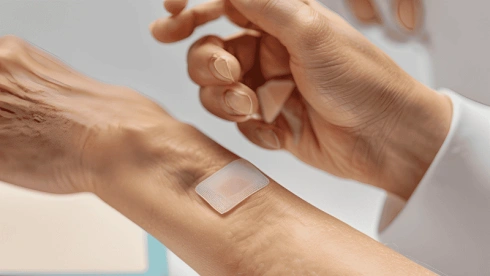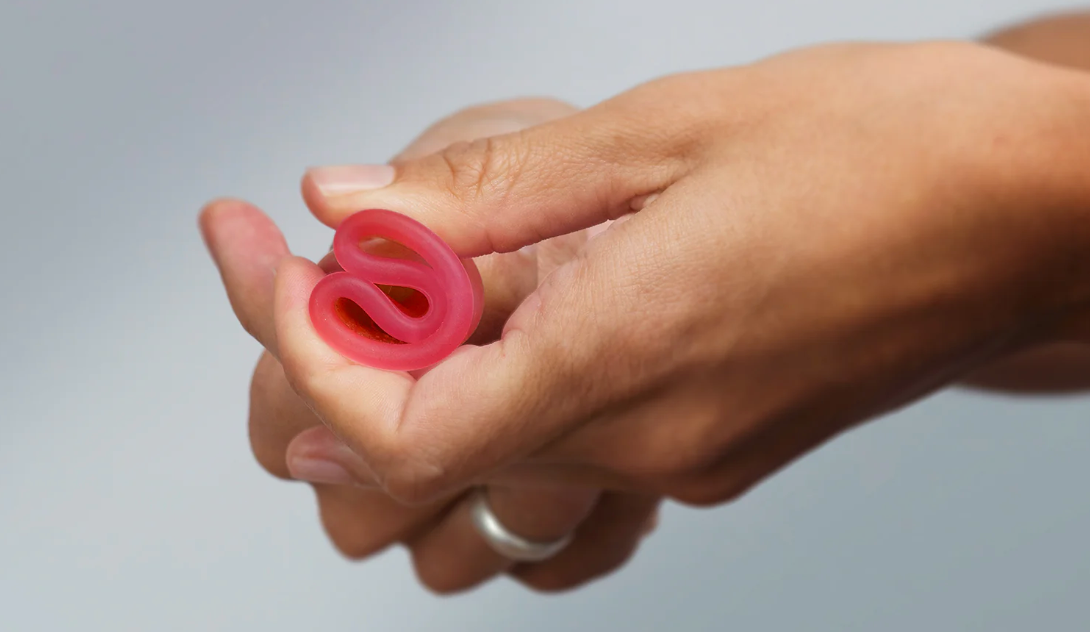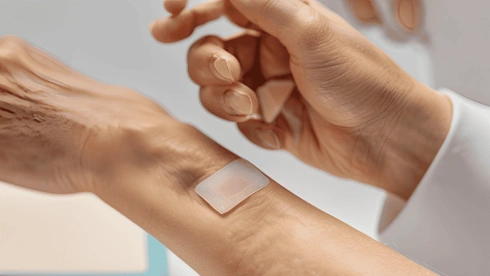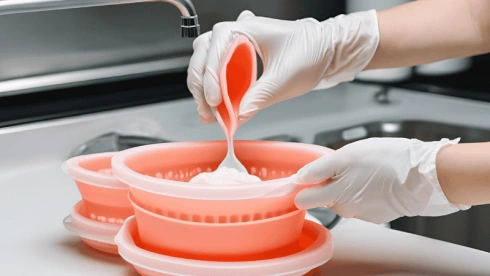This post will explore silicone rubber allergies and the vital role of hypoallergenic products. We’ll outline their usage and share tips on implementing these safer products into your business.
Allergies And Silicone Rubber
We often encounter various substances daily, some of which may cause allergic reactions. Certain materials like natural rubber, latex, and silicone demand our attention among these substances due to their widespread use in various industries.
By understanding allergic reaction, their causes, and the specific relationship between natural rubber latex allergies and silicone allergies, we can make informed decisions for our health and businesses.

What Are Allergic Reactions And Their Causes
Allergic reactions are unpleasant body responses. They occur when our immune system mistakes harmless substances for threats. These substances, termed allergens, can vary widely. They can be certain foods, pollen, or materials such as latex or silicone.
Exploring The Relationship Between Latex And Silicone Allergies
Latex allergies as a risk factor for silicone allergy
Let’s understand the connection between latex and silicone allergies. An individual with a latex allergy generally develops a silicone allergy as well. The reason is simple. Our immune system can respond similarly to related substances. So, if you’re someone to whom latex allergy generally develops, avoid silicone as well.
Cross-reactivity between latex and silicone allergies
This leads us to the concept of cross-reactivity. In this case, proteins in both latex and silicone can cause similar adverse reactions. The result? Silicone might do the same if latex triggers an allergic reaction in you.

Recognizing Silicone Allergy Symptoms: A Key to Healthier Choices
Silicone allergy symptoms can often go unnoticed, leading to continued discomfort and potential health risks. Recognizing these symptoms early can safeguard your health, make informed decisions, and potentially mitigate any adverse reactions.
Let’s unravel the signs of silicone allergies, the testing process, and how to differentiate them from similar conditions.
Common Symptoms And Signs Of Silicone Allergy
Understanding silicone allergy is crucial for health and safety. An allergic reaction to silicone can present several symptoms. You might experience redness, itching, and swelling. There could be hives or blisters in severe cases. Sometimes, breathing difficulties might occur.
Quick summary of silicone allergy symptoms:
- Redness
- Itching
- Swelling
- Hives or blisters
- Breathing difficulties
Skin Patch Test For Identifying Silicone Allergies
A skin patch test is a common method to identify silicone allergies. A small amount of silicone is applied to a patch during this test. This patch is then placed on the skin. The skin’s reaction to the silicone is observed after 48 hours.
Steps for a skin patch test:
- Place the patch on the skin.
- Apply a small amount of silicone to a patch.
- Observe the skin’s reaction after 48 hours.

Differentiating Between Allergic Reactions And Irritant Contact Dermatitis
Understanding these differences can help identify the correct condition and guide the appropriate treatment. Distinguishing between silicone allergic contact dermatitis is vital. Here are a few points to consider:
- Allergic reactions often occur after repeated exposure to the allergen, whereas allergic contact dermatitis can occur after a single exposure.
- Symptoms of an allergic reaction may appear on parts of the body not directly in contact with the allergen. In contrast, allergic contact dermatitis generally affects only the area of skin that comes into contact with the irritant.
- Allergic reactions often take longer to develop than irritant reactions, which usually appear within a few hours of exposure.
Hypoallergenic Silicone Products: The Future of Safety and Comfort
Hypoallergenic silicone products offer a beacon of hope in a world where allergies are becoming more prevalent. These products ensure safety, comfort, and peace of mind, especially for those living with silicone allergies.

What Is Hypoallergenic Silicone?
Hypoallergenic silicone is a unique type of silicone that’s specifically formulated to minimize allergic reactions. It’s engineered to have reduced potential for causing an allergy, which makes it a safer choice for many applications, particularly those that require direct skin contact.
Hypoallergenic silicone has several impressive properties, including:
- Allergy-friendly: As the name suggests, hypoallergenic silicone is less likely to trigger allergic reactions. This makes it an excellent choice for individuals with sensitive skin or known allergies.
- Temperature resistant: It maintains its properties across various temperatures, making it versatile for various applications.
- Durability: Hypoallergenic silicone is known for its longevity. It’s resistant to wear and tear, ensuring that products made from it stand the test of time.
- Easy maintenance: This type of silicone is easy to clean, which helps keep allergens at bay. Its non-porous nature means it doesn’t harbor bacteria or fungi.
- Comfort and flexibility: Despite its durability, hypoallergenic silicone is soft and flexible, enhancing comfort in wearable and personal-use products.
Natural Rubber Latex Vs. Silicone Rubber
When comparing natural rubber latex and silicone rubber, several differences arise:
| Natural Rubber Latex | Silicone Rubber |
|---|---|
| Can cause severe allergies | Hypoallergenic, less likely to cause allergies |
| Less heat resistant | Highly heat resistant |
| May degrade over time | Long-lasting and durable |
| Requires regular maintenance | Easy to clean and maintain |
Examples Of Hypoallergenic Silicone Products
- Jewelry and accessories: Hypoallergenic silicone is ideal for jewelry like silicone earrings or silicone wristbands, reducing the risk of skin irritation for wearers.
- Medical and dental devices: Hypoallergenic silicone is often used in medical equipment like catheters or dental devices, reducing the risk of patient allergies. It is important to note that this equipment uses medical-grade silicone.
- Baby bottle nipples and pacifiers: With babies’ sensitive skin, hypoallergenic silicone nipples and pacifiers can prevent potential allergic reactions, ensuring a safer feeding experience.
- Personal care items and household products: From silicone-coated hair brushes to kitchen utensils, hypoallergenic silicone items provide a safer, allergy-free home environment.
Incorporating hypoallergenic silicone products into your life or business can significantly reduce the risk of allergic reactions, contributing to a safer and more comfortable environment.
Benefits And Properties of Silicone
Silicone’s unique properties make it a sought-after material in various industries. Let’s explore some of these properties and their benefits.

Mechanical Properties and Resilience
Silicone boasts impressive mechanical properties. It’s durable, flexible, and resilient. These characteristics make it perfect for products that need to withstand wear and tear.
Think about automotive parts or kitchen utensils. They endure repeated use and still perform well. Silicone’s resilience ensures products last longer, offering excellent value for money.
Chemical Stability and Resistance
Silicone’s chemical stability is noteworthy. It’s resistant to water, ozone, and UV light. In addition, it doesn’t react with most chemicals. This resistance is vital in sectors like healthcare and food processing.
For example, silicone tubing in medical devices or food production lines won’t break down or contaminate substances passing through them. This stability ensures safety and reliability.

Heat and Cold Resistance
Silicone’s resistance to extreme temperatures sets it apart. It can withstand both high heat and freezing cold without losing its form or properties. This makes it ideal for applications such as baking molds and ice cube trays. It’s also crucial in industries like electronics, where components must resist heat generated by devices.
Non-Allergenic Nature of Silicone Material
Lastly, silicone’s non-allergenic nature makes it a safer choice. Unlike other materials, it’s less likely to trigger allergic reactions. This is crucial in products that touch the skin, such as baby bottle nipples or medical devices. It gives customers peace of mind, knowing the products they use won’t harm them or their loved ones.
Managing Silicone Allergies and Precautions: A Proactive Approach to Wellness
Navigating life with silicone allergies can feel daunting, but it can become much more manageable with the right guidelines and practices. We can reduce potential allergen exposure by focusing on cleaning, sterilization, and regular inspection of silicone products.
Cleaning And Sterilization Guidelines
Proper cleaning and sterilization of silicone products can significantly lower the risk of allergic reactions. Here are some key tips to consider:
- Clean thoroughly: Pay close attention to nooks and crannies where allergens might linger. A thorough cleaning can help ensure all potential allergens are removed.
- Sterilize regularly: Sterilization kills bacteria, fungi, and other microbes that might cause an allergic reaction. Depending on the product, you can sterilize silicone items by boiling, steaming, or using a sterilization machine.
- Use suitable cleaning agents: Opt for hypoallergenic soaps and detergents. These products are less likely to cause irritation or allergic reactions.

Regular Inspection For Wear And Tear
Silicone products, despite their durability, can degrade over time. Regular inspection helps to identify any wear and tear before it becomes a problem.
Importance: Worn-out silicone products can harbor allergens, increasing the risk of allergic reactions. Furthermore, they may not function as effectively, impacting their performance.
How to do it:
- Visual Inspection: Regularly check your silicone products for any visible signs of wear, such as cracks, discoloration, or changes in texture.
- Functional Test: Test the product’s functionality. It might be time for a replacement if it’s not performing as expected.
By embracing these cleaning, sterilization, and inspection practices, managing silicone allergies becomes less of a challenge. More importantly, these habits can ensure minimal natural aging, boosting their performance and satisfaction.
Why Choose Silicone and Hypoallergenic Products: Making a Smart Business Choice
Opting for silicone and hypoallergenic products can substantially benefit businesses across various industries. Here’s why.

- Versatility and Durability
Silicone’s versatility and durability make it a standout choice. It withstands regular use, from automotive parts to kitchen utensils, without compromising performance. In fact, the global silicone market size was valued at USD 4.6 billion in 2020 and is expected to grow, proving its popularity and application across industries.
- Chemical Stability
Silicone’s resistance to most chemicals makes it safe and reliable for sensitive applications. In the healthcare sector, for example, silicone tubing in medical devices ensures no harmful reactions with body fluids or medications, ensuring patient safety.
- Temperature Resistance
The ability of silicone to withstand extreme temperatures is a boon for sectors like electronics and baking. It ensures product performance even in heat-intensive situations, contributing to products’ overall durability and longevity.
- Hypoallergenic Nature
Finally, the hypoallergenic nature of silicone makes it a safer choice. Allergic reactions can lead to discomfort, health risks, and, in business terms, potential product returns or lawsuits. Hypoallergenic silicone reduces these risks, increasing customer satisfaction and safety.
For instance, companies in the baby care industry increasingly choose hypoallergenic silicone for products like pacifiers and bottle nipples. This decision ensures the babies’ safety using these products and builds trust with parents, leading to increased brand loyalty.

Conclusion: Embracing A Safer Future With Silicone And Hypoallergenic Products
In conclusion, silicone and hypoallergenic products offer significant advantages, including enhanced durability, safety, and customer satisfaction. As allergies become more prevalent, these hypoallergenic materials are not just a choice but a necessity.
At Hongju Silicone, we’re committed to providing high-quality silicone products, offering a safe and effective solution for businesses across industries. Explore our website for more insights and to discover our wide range of products, reinforcing your commitment to safety and quality.
Take The Next Step Towards Superior Quality And Safety
At Hongju Silicone, we’re more than just a silicone products manufacturer – we’re a partner dedicated to providing safe, durable, and hypoallergenic solutions that meet your needs.
We believe in the power of silicone to revolutionize industries, improve customer satisfaction, and, most importantly, provide safer options for those with allergies. Ready to explore more? Contact us now!